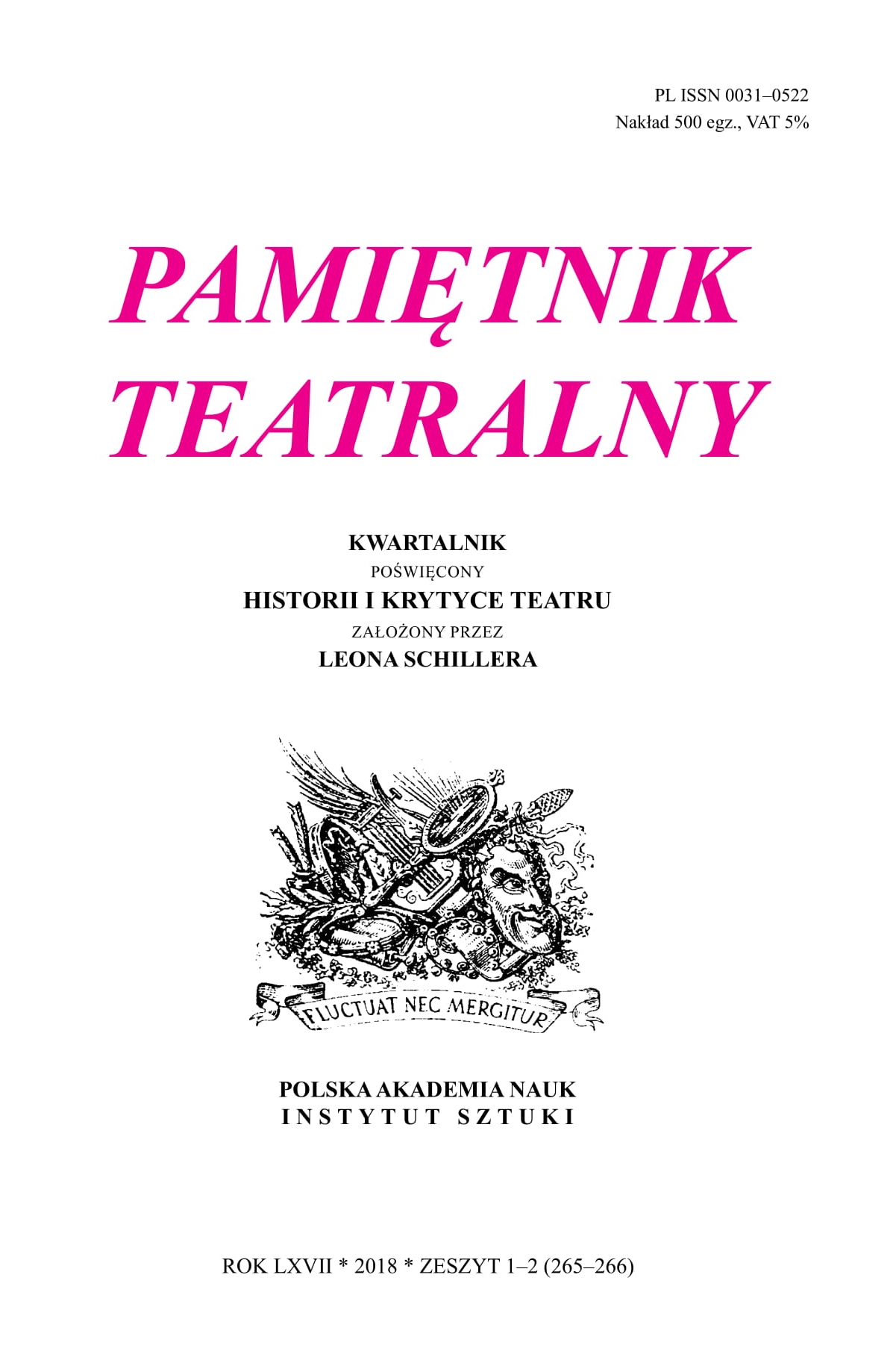Recenzja książki Wojciecha Klimczyka, Wirus mobilizacji. Taniec a kształtowanie się nowoczesności (1455–1795), (Kraków 2015, Universitas)
A review of Wojciech Klimczyk's book Wirus mobilizacji. Taniec a kształtowanie się nowoczesności (1455–1795), (Universitas: Kraków, 2015)
Author(s): Grzegorz KondrasiukSubject(s): Fine Arts / Performing Arts
Published by: Instytut Sztuki Polskiej Akademii Nauk
Keywords: theatre history;dance history;theatrical performance;theatrical aesthetics;dance analysis;
Summary/Abstract: In his two-volume work, Wirus mobilizacji, Wojciech Klimczyk confronts a subject matter spanning a sizeable period of time (from the Late Middle Ages to the French Revolution) and a large geographical area (Italy, France, and England) and covering a wide array of topics (i.a. aesthetics, philosophy, history of ideas and political thought). The story is told from a particular point of view: it is a history of Western Europe interpreted through the changing dancing practices, or to use Klimczyk’s own vocabulary, an owerview of subsequent social choreographies. The author has chosen a path matching that of Anglo-Saxon dance theory, most notably the work by Susan Leigh Foster, Mark Franko, and André Lepecki. Proceeding in chronological order, he analyses a number of dance treatises that (with the exception of Noverre’s work) have not been translated into Polish. The treatises and handbooks on dancing by Domenico da Piacenza, Antonio Cornezano, Guglielmo Ebreo (Italian Renaissance); Thomas Elyot, John Weaver, John Playford (Tudor England); Rinaldo Corso, Nicolas de Saint-Hubert, Thoinot Arbeau, Fabritio Caroso, Pierre Rameau, Jean Noverre (France in the times of absolutism) are discussed in detail and with numerous quotes and, taken together, provide a comprehensive vista of the European thought on choreography and its evolution. In fact, the two sizeable volumes contain several books on related topics: a history of choreography including a history of dances; a social and political history of dancing; a history of aesthetic positions with respect to dance; kinetic analyses of paintings and dramas (i.a. Botticelli, Poussin, Molière); an overview of philosophical reflexion (i.a. by Descartes, Leibniz, Locke, Diderot, Rousseau, and de Sade) with an eye to how human body is defined. Klimczyk openly refers to the scholars who have supplied him with the theoretical framework for his endeavour; his most important operative concepts come from Michel Foucault, Jacques Rancière, and Pierre Bourdieu. Klimczyk’s curious idea of historicity is based on Foucault’s concept of épistème; following Pierre Bourdieu, he describes the mechanisms of distinction that produce social hierarchies through dance; whereas Rancière has inspired him with the atemporal concept of the perceivable, which Klimczyk uses as an analogy for his own concept of “the movable.” All of it enables him to arrive at a more general, higher-level category of kinesis whose changeable form permeates history and manifests itself not only in artistic dance, but most of all in many other cultural spectacles (balls, ceremonies, military parades, revolutionary rallies, revolts, executions, etc.). By investigating the transformations of kinesis and by reconstructing a somatic history of Europe, Klimczyk attempts to pinpoint the birth of modernity and detects the beginnings of the process as early as in the Renaissance. In order to construct such a method of interpreting historical processes, Klimczyk has postulated strong links between some phenomena. Following Peter Sloterdijk, he associates the beginnings of modernity with a rise in human activity. As a reader of Hannah Arendt’s work, he also presents the history of dance and of defining human corporeality (parallel to political and social history) as a process leading to emancipation and autonomy of human agents. Klimczyk also admits to Hegelian inspiration, believing in the existence of a logic that governs the historical process of emancipation. And it is the history of European individualism as reflected by the category of kinesis that binds the whole book together. Wirus mobilizacji is dense, perhaps even overloaded with analyses and references, pulling all factual material into a whirlwind of dazzling discourse. At times the author seems to do it at the cost of some omissions or analogies that seem stretched. But if we take Wirus mobilizacji to be a peculiar kind of a writing proposition (in line with some suggestions of postmodern philosophy, which at times takes itself to be a kind of literature), these peculiarities will cease to be irritating.
Journal: Pamiętnik Teatralny
- Issue Year: 266/2018
- Issue No: 1-2
- Page Range: 225-229
- Page Count: 5
- Language: Polish

